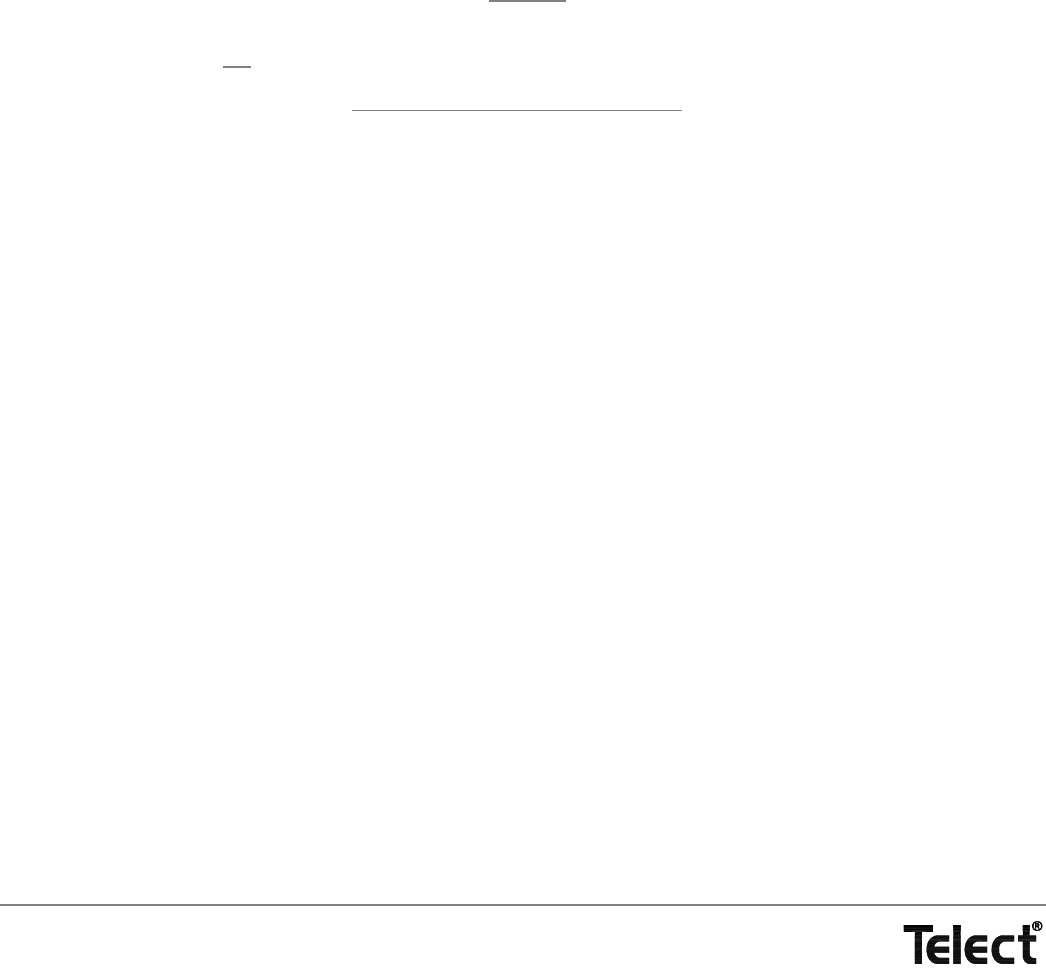
Telect, Inc. • USA +1.509.926.6000 • Mexico +1.52.33.3836.3700
Poland +1.48.713.239.100 • UK +1.44.1489.889500 • www.telect.com
Copyright © 2002 Telect, Inc., All Rights Reserved
Page 2-6
3. Torque ground connection to 6 ft-lb (8.13 N•m).
4. Likewise, secure the connectorized opposite end of the ground cable to a bare metal portion of the bay’s frame or the conduc-
tor-to-office-ground system. (If necessary scrape paint from the frame and use electrical joint compound to ensure good ground
contact.)
— B. Install Input Cabling
• For top-down input feeds, begin cabling to the topmost panel and then work your way down the bay.
• For bottom-up input feeds, begin at the bottom and work your way up the bay.
Finish all input cabling in a bay before beginning any output cabling in that same bay.
NOTES
• Keep in mind that Feeds A and B are independent (unshared) feeds.
• Input cabling to the BDFB / BDCBB must support 125% of the total, rated, continuous load currents of the equipment
powered by the BDFB / BDCBB. Remember: The maximum continuous load per feed is 600A.
• Consider inherent voltage drop in determining input wire size. Remember to choose wire size based on the circuit break-
er/fuse size and not
on the expected load. Use the standard formula to check wire size:
Max.Vdc Drop =
(11.1) x (fuse size) x (total wire length in ft)
(circular mils of wire used)
Proceed as follows to cable inputs to each side of the panel:
1. Use a UL-approved crimping tool to attach a UL-approved, dual-hole 750/777.7 MCM compression lugs onto appropriate
cables. Insulate lug barrels as required.
2. Clean terminals and lugs with a nonabrasive, nonmetallic pad.
3. Feed input cabling down (or up for a bottomfeed) into the rear central area of the panel — that is, between the output cable
management brackets — to the topmost BDFB / BDCBB (or bottommost for an upfeed).
4. Lightly coat anti-oxidant electrical joint compound on lugs and -48 input terminal plates.
5. Use a
3
/8-16, grade 2 bolt, washers, and nut (all provided) to secure the first pair of -48 cabling to the -48 input bus terminal
plate:
• If two lugs are used, remember to attach lugs to opposite faces of the terminal plate. DON’T STACK LUGS on one side of
the terminal plate.
• Always route cables in a neat orderly manner to ensure that the cables exert no pulling or twisting forces on the input and
return terminal plates. DON’T ALLOW TERMINAL PLATES to support the weight of or to restrain the cable.
NOTE
The input lugs on the topmost terminal (or bottommost for an upfeed) are connected, as shown on the following page, so that
the lugs are held straight up on the sides of the terminal plate. Subsequent cables and lugs to the inbetween panels in the bay
can be pivoted up to 25º off of vertical to allow easier cable management access throughout the bay.
